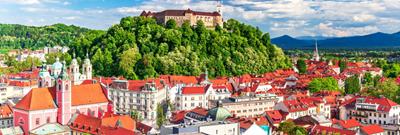
Now that the world has opened up again – for the most part – how will travel change? Here are five of the biggest travel trends to keep an eye out this year.
Hopefully they’ll provide some inspiration for your own travels.
1. Set-jetting to beautiful binge-watch destinations
Travelling to locations featured on TV and film isn’t exactly a new phenomenon. But after having been glued to our screens for an extended period of time, it’s natural for it to have influenced our holiday choices. And there’s certainly a new wave of shows inspiring wanderlust in viewers.
HBO’s smash show The White Lotus in particular has been drawing fans in with its alluring locations. While the first season was filmed at the Four Seasons Resort Maui at Wailea in Hawaii, the second season is based closer to home.
Much of the latest series was filmed at the San Domenico Palace hotel in Taormina, on Sicily’s north-east coast. It’s perched on a cliff top overlooking the Ionian sea, with a view of Teatro Antico di Taormina – an ancient Greek-style amphitheatre – and Mount Etna smouldering in the background.
Staying at the very upmarket San Domenico is out of most people’s budgets, but if you’re planning a trip to Sicily then Taormina is well worth checking out. Catania Fontanarossa airport is an hour away. You can fly direct from London Gatwick, Stansted and Luton, as well as Bristol, Birmingham, Manchester, Leeds Bradford and Edinburgh.
Also putting Italy at the forefront of would-be holidaymakers’ minds is CNN show Stanley Tucci: Searching for Italy, which is available to watch on iPlayer.
It’s not just sumptuous scenery on offer here… Stanley samples the mouthwatering cuisine of each of Italy’s 20 regions, such as pizza in Napoli, and prosciutto de parma in Bologna. Be warned: your tingling tastebuds may send you immediately to Skyscanner.
2. Sleeper trains are back with a ZZZZZZZ
For many, flying is increasingly out of fashion. Not only do there seem to be fewer routes available, but we’re growing increasingly aware of its environmental consequences. So expect some people to turn to low-impact transport in 2023, and embrace slow travel.
Among these modes, there promises to be an uptick in sleeper trains. For instance, the community-based European Sleeper launches this month, linking Brussels, Amsterdam and Berlin. Sleeping carriages are available for single travellers, or groups of two or three, starting at €109 for a bed (just under £97 at the time of writing) – cheaper than many hotels in these capitals.
Departure is at 19:22 from Brussels Midi on a Monday, Wednesday and Friday. This means you could travel to Brussels from St Pancras of an afternoon, and be in Berlin by the following morning – totalling a little under 16 hours. A good eight of which will be spent sound asleep, with any luck. In addition, pets are allowed in the private carriages, if you want to take your furry friend with you.
More routes and stops are planned, and you may one day soon be able to travel by sleeper to Barcelona and Stockholm.
Slow travel might mean a mix of modes, such as trips by rail, bus and ferry. To build your own adventure without setting foot in an airport, check out flight-free holidays with Byway
3. extended working holidays will create more digital nomads
According to a survey conducted by the Office for National Statistics, 38% of working adults in Great Britain worked at least partly remotely in spring 2022, with 14% working exclusively remotely.
Now that remote and hybrid working is commonplace – despite no restrictions being in force – the community of digital nomads is growing. After all, if you can work from anywhere, why wouldn’t you? Indeed, in the same survey, over three quarters of home and hybrid workers reported an improved work-life balance.
And there’s no reason why work should be confined to the home office or local coffee shop. As long as workers can get by with a laptop and WiFi, expect trips to further-flung ‘offices’ to become more common, and grow longer in duration.
Digital nomadism isn’t purely conceptual. A wealth of countries have now launched digital nomad visas, meaning that remote workers can apply for temporary residency. These visas typically last for 12 months, although extensions may be available. Check out the 49 countries with digital nomad visas at Nomad Girl.
Location independence has numerous benefits. You can take advantage of staying in areas with a low cost of living, draw inspiration from interesting surroundings, learn about other ways of life, and potentially make new lifelong friends. If your work is adaptable, why not treat yourself to a long working holiday in 2023? Just remember to make time for leisure too!
4. Exploring the great outdoors
The Covid pandemic prompted many more people to get outdoors and enjoy some more time in the woods, mountains or other wide open spaces.
At the same time there has been an increased focus on wellness and the mood-boosting benefits of spending time outdoors. A time to switch off and enjoy nature.
So it may come as little surprise that many travellers are choosing to head into the great outdoors for their holidays. They might go wildlife spotting and hiking, perhaps staying in a rural hut or cabin. Time to turn those gadgets off, it’s time to enjoy the simpler things in life and recharge.
5. Finding alternatives to popular hotspots
Travelers are ditching popular tourist spots for alternative, less well-known destinations.
For example, if you fancy some Spanish sunshine and city bustle you could try Valencia instead of Barcelona; like its more popular cousin, the smaller city offers both vibrant city culture and beaches.
Or you could skip busy, expensive Venice and head to Trieste, another stunning port town a couple of hours’ drive away. As well as beautiful architecture, Trieste has some great beaches and mountains, and is famous for its café culture.
For a trip further afield, National Geographic suggests swapping Peru’s famous mountaintop site, Machu Picchu, for Kuelap. It’s another fabulous, historic Incan site, also in a spectacular mountain setting, but with far fewer tourists than Machu Picchu.
These are just a few suggestions, but the options are endless. With some online research you can find plenty of alternatives to popular hotpots. Why not read our article: Looking for an alternative to a beach-holiday?

